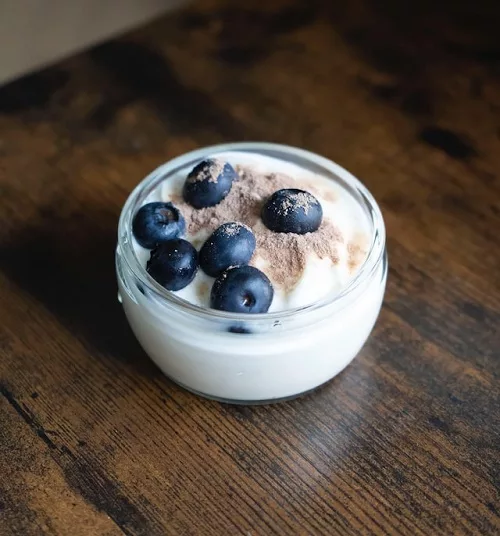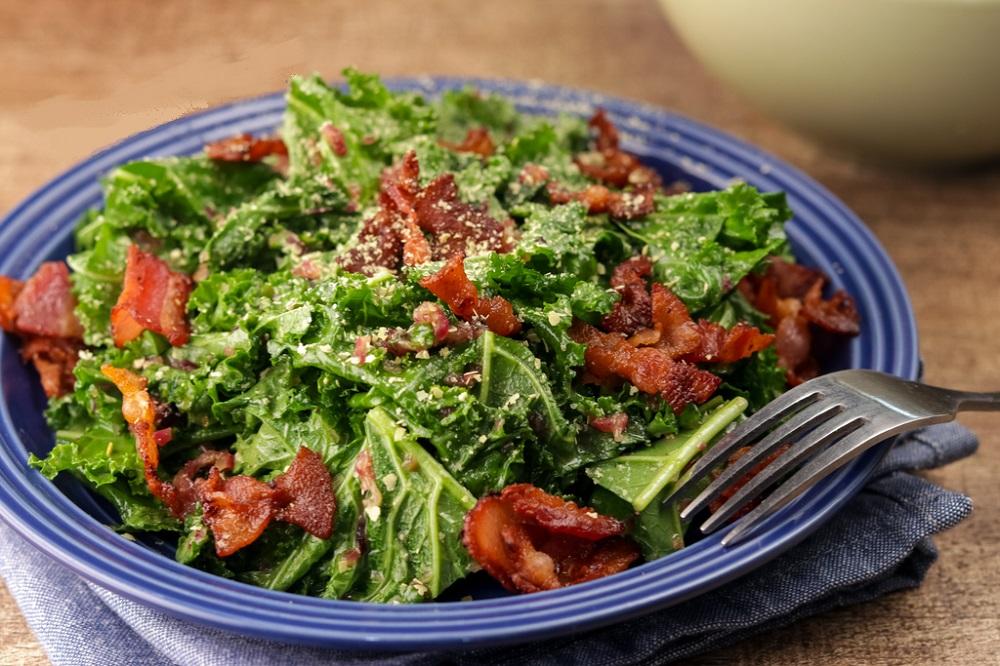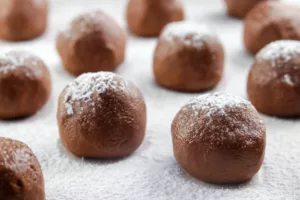Take Control of your Keto Diet Today...
Updated:
Time to Read:
Introduction
Whether you’re a beginner exploring the keto lifestyle or an experienced practitioner looking for new food ideas, this keto food list will serve as your go-to resource for creating delicious and satisfying meals that align with the principles of the keto diet.
By familiarizing yourself with this comprehensive food list, you’ll have a solid foundation for planning your meals, making grocery shopping easier, and maintaining a healthy and balanced ketogenic diet.
As most meals are planned around a “core” ingredient or base… let’s start with that – Protein.
Protein
Protein is like the superhero of your body, providing all the essential amino acids that help build lean muscle, repair cells, and produce hormones. Now, your body is pretty awesome at making most amino acids on its own, but there are these nine cool ones it can’t produce.
Luckily, when it comes to protein, animal sources are the real MVPs because they’re “complete proteins.” That means they’ve got all the essential amino acids covered, making them a fantastic choice.
Now, here’s the thing: while protein is important, going overboard on it isn’t ideal for a keto diet. Too much protein, especially super lean options, can spike your insulin levels and kick you out of that glorious ketosis state.
So, what’s the sweet spot? Well, aiming for around three to six ounces of protein per meal should do the trick. This way, you’ll get all the necessary amino acids without sacrificing your ketosis.
But hey, protein isn’t just limited to meat! Fish is like the unsung hero of protein sources. It’s not only packed with the good stuff but also supports heart health and weight loss. Think wild-caught salmon or sardines – they’re loaded with healthy fats and are perfect keto-friendly options.
And guess what? Many of the protein foods that rock on keto are also great sources of fat. It’s like getting the best of both worlds! So, when choosing your protein, make sure to check out the keto food list below. Combining your protein intake with healthy fats will slow down digestion, keep you feeling satisfied, and help you shed those pounds. It’s like a win-win situation!
Oh, and here’s an extra bonus: when you have meals that include both fat and protein, your digestion takes a chill pill, and you’ll feel fuller for longer. And that is a major help for weight loss and a handy tool for ketosis.
Keto Friendly Meats
Key Takeaways – Keto Friendly Meat
- Choose meats with more fat since they contain less protein and usually, more flavour.
- When choosing ham, be on the lookout for added sugar.
- Avoid sausages and meats that come with sugary sauces and those covered in breadcrumbs.
- Also, take care with pork sausages… avoiding those with additives or preservatives.
Dairy Products

With yogurt, check labels first and limit your intake as they tend to be higher in carbs.
For full-fat sour cream, again, check labels for additives.
Only full-fat ‘RAW’ milk is acceptable for keto.
For recipes that do call for milk, substitute dairy milk for Almond Milk or Coconut Milk, and for coffee lovers, if you can’t do bullet-proof coffee, then use full-fat cream.
With milk and dairy products, it’s always better to try and source raw milk products, but if you don’t have easy access to them, go for organic.
Eggs
This includes chicken eggs, and quail eggs
which you can prepare any way you like;
Here’s a super simple snack recipe for Deviled Eggs with bacon and Kimchi.

Fish & Seafood
Key Takeaways – Keto Seafood
- Canned tuna and salmon are great to consume while you are on the keto diet.
- Try to opt for wild-caught fish if possible – to avoid potential toxins in ‘Farmed’ fish.
- Whilst most kinds of seafood are fine for Keto, avoid those which are rich in fillers, breaded seafood, and fried seafood.
Vegetarian & Vegan Proteins
Protein : Key Facts
Muscle Maintenance and Growth
- Protein is the building block of muscles.
- When following a keto diet, the body primarily relies on fat for energy, but still requires protein to support muscle maintenance and growth
- Consuming sufficient protein helps preserve lean muscle mass, especially during weight loss, and can prevent muscle breakdown.
Satiety and Appetite Control
- Protein is highly satiating, meaning it helps you feel full and satisfied after a meal.
Thermic Effect of Food
- Protein has a higher thermic effect compared to fats and carbohydrates.
- This means that the body expends more energy (calories) to digest and process protein.
- Including protein in your meals can slightly boost your metabolism, contributing to increased calorie expenditure.
Nutrient Density
- Protein-rich foods often come with a range of essential nutrients, such as vitamins, minerals, and amino acids.
- Incorporating quality protein sources into your keto diet helps ensure you receive these vital nutrients that support overall health and well-being.
Gluconeogenesis*
- In some cases, excessive protein consumption on a keto diet can lead to a process called gluconeogenesis, where the body converts protein into glucose.
- This can potentially hinder ketosis and the desired fat-burning state.
- However, it is important to note that moderate protein intake is generally well-tolerated and should not significantly impact ketosis for the majority of individuals.
Fats
During ketosis, the body primarily relies on fat for fuel instead of carbohydrates, resulting in the breakdown of stored fat for energy.
To make it easier to stick to this diet, be aware of which types of fat your body can tolerate. Many people for example, seem to have zero or very low tolerance for vegetable oils and mayo.
Although this can appear to be a negative, it can be a real positive to avoid these because most vegetable oils are rich in harmful omega-6 fatty acids… and should be avoided.
Carbs
Carbohydrates provide the body with its primary and preferred source of fuel, especially for high-intensity activities and certain bodily functions. However, on the keto diet, carbs are intentionally limited to a very low level, typically around 5-10% of total daily caloric intake, in order to shift the body’s energy metabolism towards utilizing stored fats.
Despite the limited consumption of carbs on the keto diet, it’s crucial to choose the right types of carbohydrates when they are included.
Opting for nutrient-dense, high-fiber, and low-glycemic carbohydrates can support overall health, provide essential vitamins and minerals, and promote optimal digestion and gut health.
Additionally, incorporating small amounts of carbs from non-starchy vegetables and select low-carb fruits can enhance dietary variety and micronutrient intake.
Balancing the intake of carbohydrates with healthy fats and an adequate protein intake is key to achieving a sustainable and well-rounded ketogenic diet that supports overall well-being.
Fruit & Vegetables
When it comes to vegetables, there’s a basic truth that, once you’ve grasped, will keep you on the right track every time. Almost every vegetable that grows below ground are much higher in carbs than those growing ‘above ground’.
Staying away from these kinds of veg will help maintain ketosis and obtain optimal nutritional benefits, opt for low-carb vegetables that are packed with nutrients. For these foods, opt for organic or better yet, grow your own to avoid all pesticide toxins.
Avoid starchy vegetables like beets, sweet potatoes, and sweetcorn, as they are high in total carbs and can quickly kick you out of ketosis.
Green leafy vegetables are excellent choices as they are low in carbs but rich in fiber, vitamins, and minerals. These nutritional powerhouses should be a regular part of your Healthy Keto meals.
Frozen vegetables are also acceptable, and blanching them before freezing is a good way to preserve their nutrients.
Canned vegetables, on the other hand, should be avoided. These products undergo heavy processing to extend their shelf life, resulting in diminished nutrient content and potential hidden carbs.
Keto Friendly Vegetables

When following a keto diet, the carbohydrate content of fruits needs to be carefully considered.
While fruits are generally nutritious and contain beneficial vitamins, minerals, and antioxidants, some fruits are higher in natural sugars and carbohydrates, which can impact ketosis.
Keto Friendly Fruits
Berries
- Berries such as strawberries, raspberries, blackberries, and blueberries are relatively low in carbohydrates and can be enjoyed in moderation on a keto diet.
- They are also rich in fiber and antioxidants.
Avocado
- Although commonly mistaken as a vegetable, avocado is actually a fruit, it is low in carbs and high in healthy fats, making it an excellent choice for a keto diet.
- Avocado can be enjoyed in various forms, such as sliced, mashed, or in guacamole.
Tomatoes
- While technically a fruit, tomatoes are relatively low in carbohydrates and can be included in keto-friendly meals.
- They are versatile and can be used in salads, sauces, or as a topping for dishes.
Lemon and Lime
- These citrus fruits are low in carbs and can add flavor to your meals and beverages without significantly impacting ketosis.
- Squeezing lemon or lime juice over dishes or using them in homemade dressings can enhance taste.
Key Takeaways – Keto Fruits
- It’s important to note that even keto-friendly fruits should be consumed in moderation, keeping track of your total carbohydrate intake to stay within your daily limits.
- The specific amount of fruits you can include in your diet will depend on your individual carbohydrate tolerance and overall macronutrient goals.
- When following a keto diet, it’s generally recommended to prioritize non-starchy vegetables as the main source of plant-based nutrients while obtaining fats and proteins from other sources.
Fruits to Avoid on Keto:
- Fruits high in sugar should generally be avoided or consumed in very limited quantities on a keto diet.
- Examples include
- bananas, grapes, mangos, pineapples, and dried fruits like raisins and dates.
- These fruits tend to have a higher carbohydrate content and can potentially disrupt ketosis.
Drinks / Beverages
When following a ketogenic diet, water is the top choice for hydration as it contains no calories, sugars, or additives. You can opt for filtered, sparkling, or bottled water and consider adding electrolytes to support the transition into ketosis.
If you’re seeking a flavorful or energizing option, there are several keto-approved drinks available. Nut milks such as almond or coconut milk offer a tasty and nutritious alternative, being rich in healthy fats that align well with the keto lifestyle.
While small amounts of coffee are permissible, it’s advisable to avoid excessive caffeine intake to prevent issues like heartburn and high blood pressure. Instead, consider enjoying Bullet-Proof Coffee or non-caffeinated herbal teas that provide a soothing and refreshing option throughout the day.
Alcohol
Generally, alcohol is detrimental to any diet regime and is a major contributor to weight problems… Avoid alcoholic drinks such as beer and sweet wine.
We have compiled a list of Keto-Friendly drinks in our guide: Best Foods For Keto including some low-carb beers such as:
- Rolling Rock Green Light: 2.6g Net carbs
- Miller 64: 2.4g Net carbs
- Budweiser Select: 1.9g Net carbs
Nuts and Seeds
- Macadamia Nuts:
- These tasty nuts are not only low in carbs but also high in monounsaturated fats, making them a perfect keto-friendly snack.
- Almonds:
- Almonds are not just a great source of protein; they also contain monounsaturated fats that are beneficial for a keto diet.
- Peanuts / Peanut Butter:
- Look for natural peanut butter without added sugars or hydrogenated oils. It’s a delicious way to incorporate monounsaturated fats into your diet.
- Hazelnuts:
- These crunchy nuts are not only rich in monounsaturated fats but also provide a good amount of fiber for a satisfying snack.
- Pecans:
- Pecans are not just delicious; they’re also packed with monounsaturated fats, making them a great addition to your keto-friendly recipes.
These are the nuts with the lowest level of carbs meaning you can consume them in small amounts, and the nuts you should avoid completely.
Nut flours:
On a keto diet, there are several alternatives to wheat flour that can be used as substitutes in baking and cooking. These alternatives are low in carbs and have different properties that make them suitable for different recipes.
Almond flour, made from ground almonds, is a popular choice as it is low in carbs, high in healthy fats, and provides a moist texture to baked goods.
Coconut flour, derived from dried and ground coconut meat, is another option that is high in fiber and low in carbs. It absorbs more liquid than wheat flour, so less coconut flour is needed in recipes.
Other alternatives include flaxseed meal, which is rich in fiber and healthy fats, and psyllium husk powder, which adds texture and binds ingredients together.
These alternatives can be substituted in a 1:1 ratio for wheat flour in most recipes, but adjustments may be needed due to their unique characteristics. It’s important to experiment and find the right combination of keto-friendly flours to achieve the desired taste and texture in your dishes.
Sweeteners:

Absolutely avoid all forms of artificial sweetener that contain;
- Aspartame
- Sucralose
- Saccharine
When it comes to sweeteners on a keto diet, it’s important to make mindful choices. While traditional sugar is high in carbs and not suitable for a low-carb lifestyle, there are several keto-friendly sweeteners available as alternatives.
Stevia, a natural sweetener derived from the stevia plant, is a popular choice among keto enthusiasts. It provides sweetness without adding any calories or carbohydrates, making it an excellent option for those on a strict keto regimen.
Another commonly used sweetener is erythritol, a sugar alcohol that tastes similar to sugar but has minimal impact on blood sugar levels. It is low in carbs and calories, making it a preferred choice for those following a ketogenic diet.
However, it’s essential to use these sweeteners in moderation, as they can still trigger a sweet tooth and potentially hinder progress towards achieving ketosis. Being mindful of portion sizes and listening to your body’s response to sweeteners can help maintain a balanced approach on your keto journey.
In summary, keto-friendly sweeteners like stevia and erythritol can be incorporated into a low-carb lifestyle, providing a way to satisfy your sweet cravings without derailing your progress. Just remember to use them sparingly and be mindful of how your body responds to maintain a healthy balance in your keto diet.
Spices
Herbs and spices not only add delicious flavors to your meals but also offer a wealth of health benefits. Studies suggest that spices have potential cancer-fighting properties and can promote a healthy balance of gut bacteria, making them an excellent choice for your keto diet.
Fortunately, most herbs are low in carbs, making them suitable for ketogenic meal preparations. To ensure easy access to your favorite herbs, consider starting your own herb garden, providing you with a fresh supply whenever needed.
When using seasoning blends, opt for those that exclusively consist of dry herbs, as they align well with the keto lifestyle. However, it’s important to be cautious of certain spice blends, dry rubs, and marinades that may contain hidden sugars or non-keto-friendly fillers such as corn starch.
Reading product labels is crucial to avoid these additives and maintain a truly keto-friendly approach to your culinary creations.
Summary
In conclusion, understanding the different food groups and their compatibility with the ketogenic diet is essential for successfully navigating this eating plan.
The keto diet emphasizes a low-carb, high-fat approach, making it crucial to have a comprehensive understanding of the foods that fit within this framework. By familiarizing ourselves with the keto-approved protein sources, healthy fat options, low-carb vegetables, and suitable sweeteners, we can make informed choices that align with our dietary goals.
Moreover, being aware of the potential pitfalls and hidden carbohydrates in certain foods allows us to maintain ketosis and maximize the benefits of this lifestyle. By comprehending the food groups and their impact on ketosis, we empower ourselves to create well-rounded and nutritious keto meals, ensuring we achieve our desired health outcomes while enjoying a varied and satisfying diet.
Frequently Asked Questions
Apples, while generally considered a healthy fruit, are not typically recommended on the keto diet due to their higher carbohydrate content.
A medium-sized apple can contain around 20 grams of net carbs, which can significantly impact ketosis, where the goal is to keep carb intake very low.
It’s advisable to prioritize low-carb fruits such as berries, avocados, and tomatoes, which have a lower carbohydrate content and can be enjoyed in moderation while following a ketogenic eating plan.
Bread, as a staple carbohydrate-rich food, is generally not recommended on the keto diet due to its high carb content.
Traditional bread is made from wheat flour, which is high in carbohydrates and can quickly disrupt ketosis. However, there are alternative options available for those following a ketogenic lifestyle.
Keto-friendly bread alternatives, such as almond flour bread, coconut flour bread, or cloud bread made with eggs and cream cheese, can be enjoyed in moderation. These alternatives are typically lower in carbs and higher in healthy fats, making them more suitable for a keto diet. It’s important to note that while these bread alternatives can offer a satisfying substitute, portion control and moderation remain key to maintaining ketosis and achieving the desired results on the keto diet.
The top 10 keto foods provide a variety of nutrient-dense options that align with the low-carb, high-fat principles of the ketogenic diet.
These foods include:
Avocados: Rich in healthy fats and fiber, avocados are a staple on the keto diet.
Eggs: A versatile and protein-packed choice, eggs are a go-to food for many keto enthusiasts.
Coconut oil: This oil is high in medium-chain triglycerides (MCTs), which can be easily converted into ketones.
Olive oil: A key component of the heart-healthy Mediterranean diet, olive oil is an excellent source of monounsaturated fats.
Nuts and seeds: Almonds, walnuts, chia seeds, and flaxseeds are nutrient-dense options providing healthy fats and fiber.
Fatty fish: Salmon, mackerel, and sardines are rich in omega-3 fatty acids and protein, making them ideal for a keto diet.
Non-starchy vegetables: Broccoli, spinach, cauliflower, and kale are low in carbs and packed with essential nutrients.
Cheese: Many types of cheese, such as cheddar, mozzarella, and goat cheese, are low in carbs and high in fat and protein.
Meat and poultry: Including beef, chicken, turkey, and organ meats, these protein sources are vital for a well-rounded keto diet.
Plain Greek yogurt: While moderate in carbs, Greek yogurt is high in protein and can be enjoyed in moderation on the keto diet.
These top 10 keto foods offer a range of options to ensure a balanced intake of fats, proteins, and low-carb nutrients while following a ketogenic lifestyle.
When embarking on a ketogenic diet, it’s crucial to be aware of the foods that should be avoided to stay in line with the principles of this low-carb, high-fat eating plan. By understanding which foods to steer clear of, you can optimize your chances of achieving and maintaining ketosis.
In this article, we will delve into the key foods that should be avoided on a keto diet, shedding light on the hidden sources of carbohydrates and potential disruptors of ketosis.









